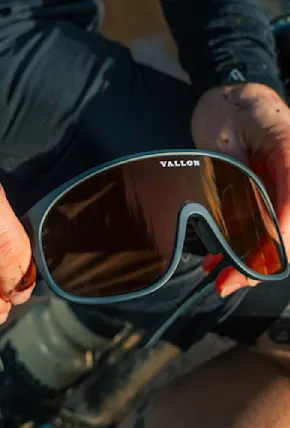A few decades later, in 1888, an eyewear maker near Chamonix named Jules Baud created tinted lenses with side shields for mountaineers searching for precious crystals in the French Alps. Iterations of this design have been improved upon considerably over the last 136 years. The frames have become lighter and are equipped with removable side shields and nose pieces; anti-fog and anti-scratch coatings have been added to the lenses to improve performance and durability; and the lenses offer greater contrast enhancement and adaptability to changing light conditions. But the basic premise is the same: protect vision in bright conditions without impeding it.
Jules Baud’s designs eventually evolved into the sunglasses brand now known as Julbo. But as athletes continued to push the boundaries, other brands developed to meet the rising need for high altitude performance shades, helping to spur further innovation in the category.
How do Glacier Glasses Work?
All sunglasses work by blocking a certain amount of visible light that can pass through the lens. The amount of light that filters through this barrier is known as the visible light transmission, or VLT, and is measured as a percentage. The higher the percentage the more light that is able to be seen. For example sunglasses with 25% VLT would allow one quarter of visible light to pass through.
Sunglasses are divided into five categories based on their VLT (there is no agreed upon scale of category divisions so the VLTs below are not exact). Category 0 (often shortened to cat. 0) has a rating of 80-100% VLT, and would be used mainly to protect the eyes from the elements in overcast or nighttime conditions, since most light would pass through.
- Cat. 1 lenses have a VLT of 43-80%, and would also be used primarily for low light conditions.
- Cat. 2 lenses have a VLT of 20-43%. These are used for moderate conditions.It is not uncommon for sunglasses with a lighter tint to be in this range.
- Cat. 3 lenses have a VLT of 10-20% and are used for sunny, bright conditions. Most sunglasses fall in this range.
- Cat. 4 lenses have a VLT of 3-10%. Thus they block out most visible light and are used only for extremely bright conditions. Hence glacier glasses typically fall in the cat. 4 range.
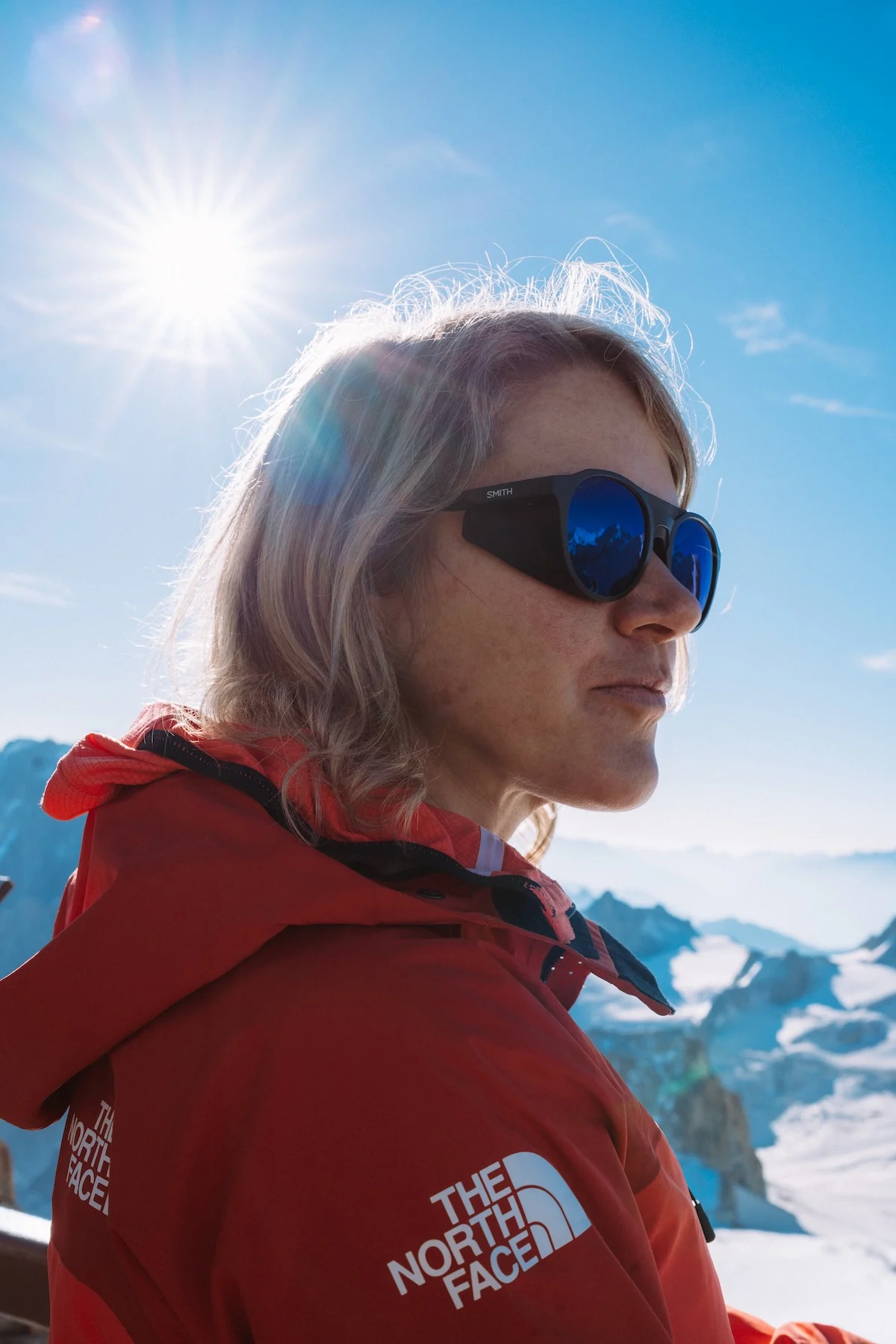
Photo courtesy of Smith
When Do You Need Glacier Glasses?
Glacier glasses have experienced something of a renaissance in recent years. Daniel Craig sported a pair of Vuarnet Glaciers as James Bond in the 2015 film “Spectre.” The classic silhouette was revived by VALLON, who launched in 2018 with the Heron model, and further updated by Sunski, who introduced the Treeline in 2019. Bigger brands have also taken note. In 2022, Smith joined the mountaineering renaissance with the Embark.
This is probably due in part to the overall increase in outdoor activity, especially when it comes to sports like ski touring in which such shades are actually useful. There is also a certain amount of steez that comes from rocking sunglasses made for high elevation at any elevation, allowing technical gear to benefit from the gorpcore bump. There is an aspirational appeal to glacier sunglasses. But do you need a pair?
That all depends. Do you spend a fair amount of time outside in bright, sunny conditions in the winter? Do you frequently ascend to the alpine zone on hike or skin up mountains? If so, a pair of glacier glasses would be added value to your outdoor pursuits. Conversely, if you simply want to be the coolest dad at the sledding hill, you might enjoy the peripheral coverage and glare protection that glacier glasses provide. They might be overkill, but you can't deny they work.
Read on for our pick for the 10 best glacier glasses for both extreme expeditions and daily wear in the backcountry and out.
10 Best Glacier Glasses with Both Form & Function

Smith Venture
Best Overall: Smith Venture
Pros: The complete package in terms of performance, accessories, steez, and sustainability.
Cons: The removable nose piece pops off too easily, making it a likely candidate to get lost.
Price: $225-$275
The Smith Venture comes in a variety of lens options, from black lenses with 10% VLT to photochromic lenses with 7-45% VLT. The lenses also feature Smith’s ChromaPop technology, which filters overlapping blue and green wavelengths of light to enhance contrast. They also use Smith’s Evolve frame, which is 55% castor oil, and they come with a host of accessories, including a carrying case, microfiber bag, and retainer strap. Unlike Smith’s flagship glacier glasses, the Embarks, the medium frame size and rounder shape of the Ventures give them a more classic look.
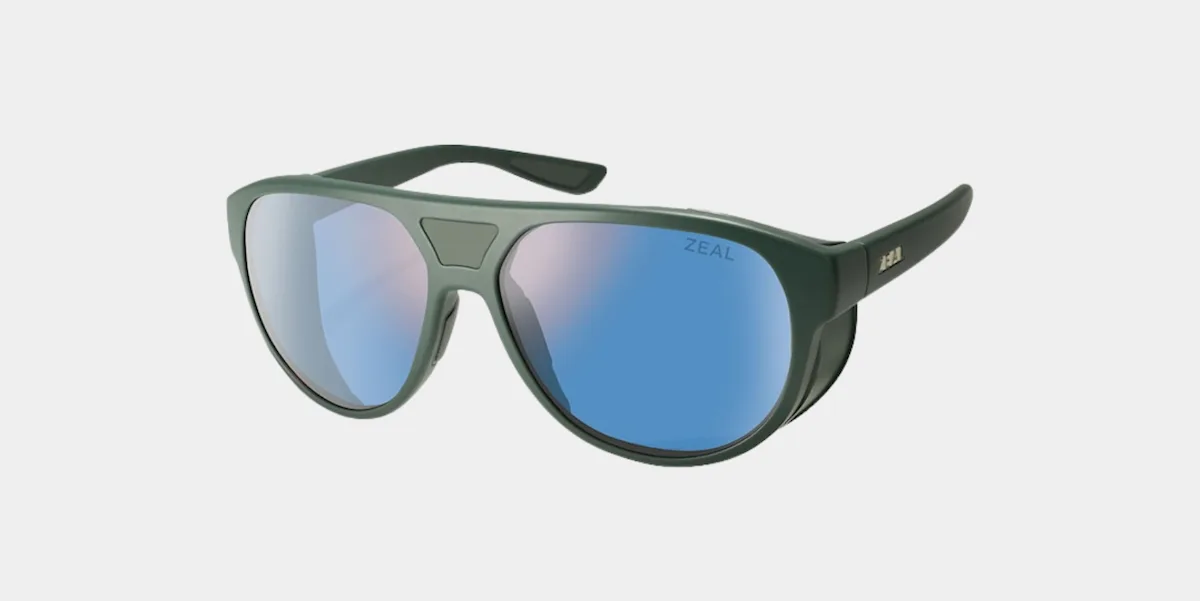
Zeal Selkirk
Most Sustainable: Zeal Selkirk
Pros: The plant-based frame, composed of 45% Z-resin (a castor bean-derived material) is an environmentally conscious option.
Cons: The Selkirks have an extra large size that will only work for people with bigger heads.
Price: $179
Based out of Boulder, Colorado, the Zeal Optics team knows what it takes to operate above treeline. Their first foray into glacier glasses is the large and in charge Selkirk. It features removable side panels and a brow piece that fits into the bridge to seal out sunshine on bluebird days. Zeal has been at the forefront of developing frames that feature less plastic and metal (the most common frame materials), and is part of 1% for the Planet.
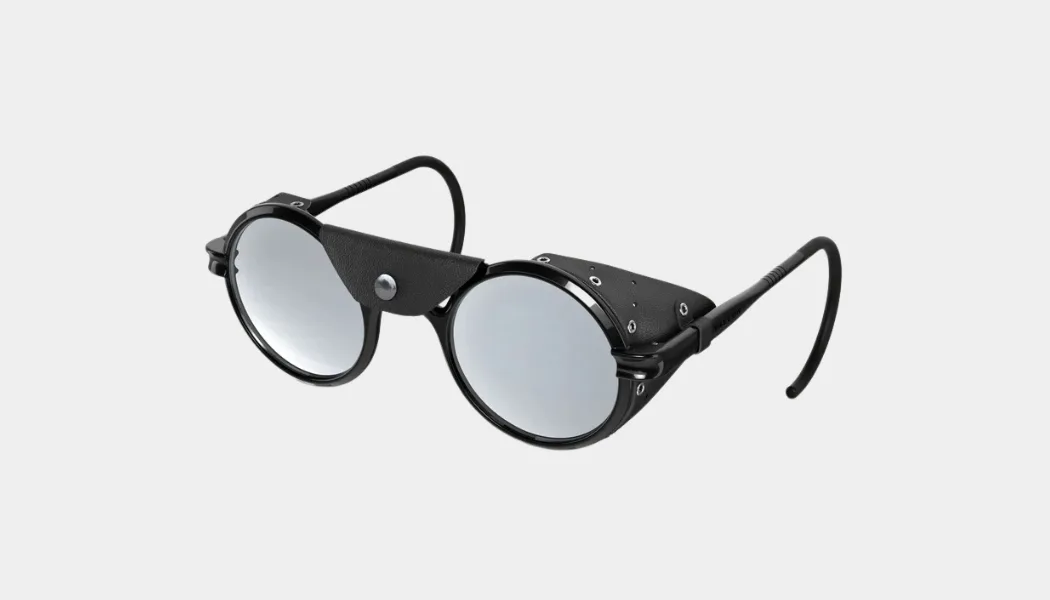
Vallon Heron
Most Iconic: Vallon Heron
Pros: The Heron absolutely nails classic mountaineering style, with leather side shields and a removable leather centerpiece.
Cons: Unless you’re going for a slightly steampunk mountaineer vibe, the aesthetic of the Heron might not be for everyone.
Price: $139
The Heron, VALLON’s flagship pair of glacier glasses, offer serious protection in a scant 25 gram frame. They feature fully adjustable temples that wrap around the ears, as well as shatterproof cat. 4 lenses. The lenses are fully mirrored to reduce glare and have an anti-fog coating so that sweating while traveling uphill won’t be a problem. The round frame is also flattering on a wide variety of faces.
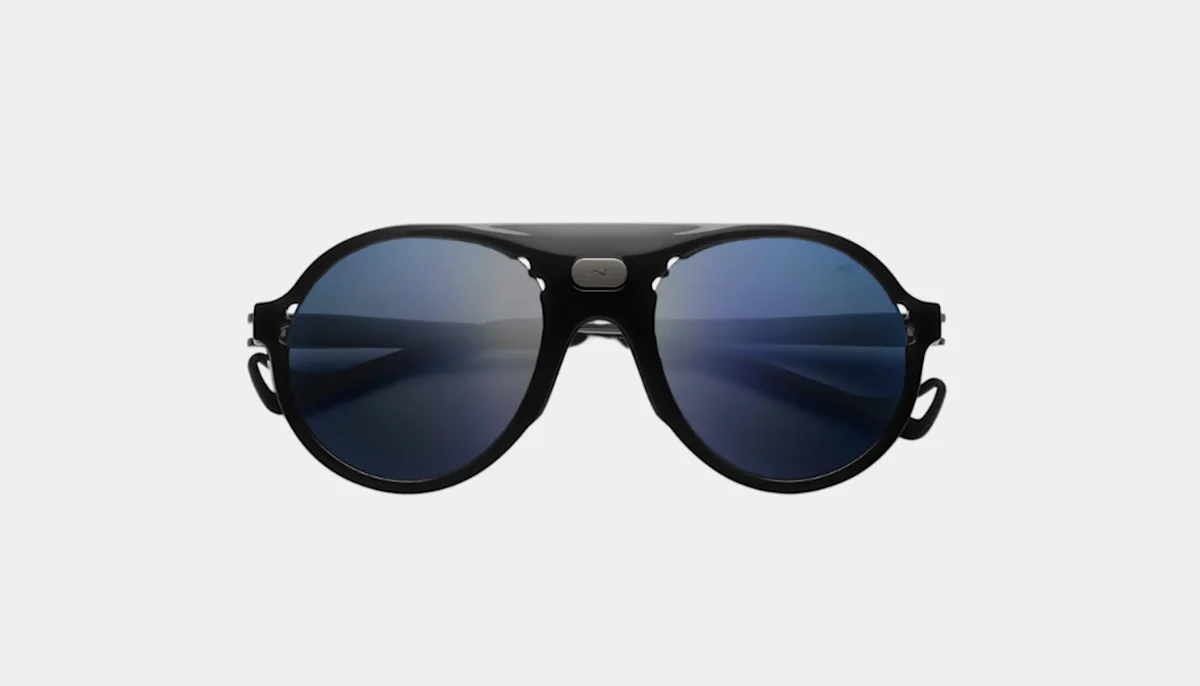
District Vision Kazu Tourer
Best for Running at High Altitude: District Vision Kazu Tourer
Pros: Lightweight, meticulously crafted, and made for movement.
Cons: The integrated side shields are small and therefore not sufficient for intense glare.
Price: $315
If you are seeking an alpine-inspired running shade for bright days, the folks at District Vision didn’t skimp on the details, with ventilated lenses, adjustable nose pads, and crystal clear Japanese lenses. The 25 gram Kazu Tourers are an elevated cross between running sunglasses and mountaineering sunglasses by blocking some peripheral glare and providing ample coverage in a lightweight package.
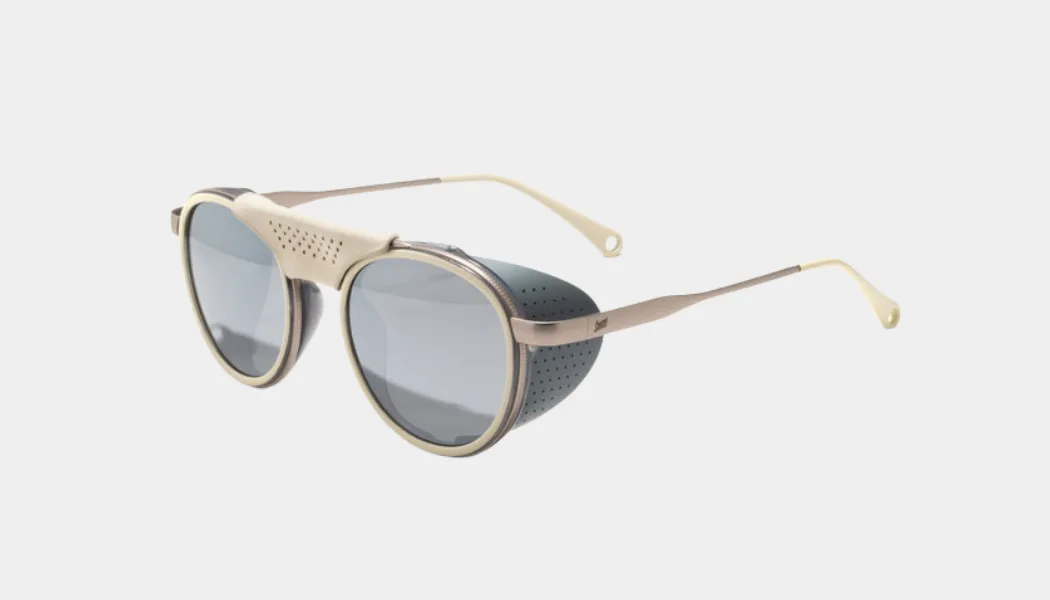
Sunski Strada
Most Versatile: Sunski Strada
Pros: The easily removable magnetic side shields make these glasses super versatile.
Cons: Fun colors mean your friends will want to steal them.
Price: $149
Sunski, which launched via Kickstarter in 2012 to revive lightweight Australian surfing shades, has amped up its performance chops in recent years. They introduced the Alpine collection in 2019, and have since added different styles to fit a wider range of face shapes. The latest offering is the Sunski Strada, and they are the best looking and best fitting frames (for small-medium head sizes) on this list. The easily removable/attachable magnetic side shields make them extra versatile. They weigh in at 33.8 grams, and have a tough stainless steel frame, making them good for the mountains, good for the beach, and good for everything in between.
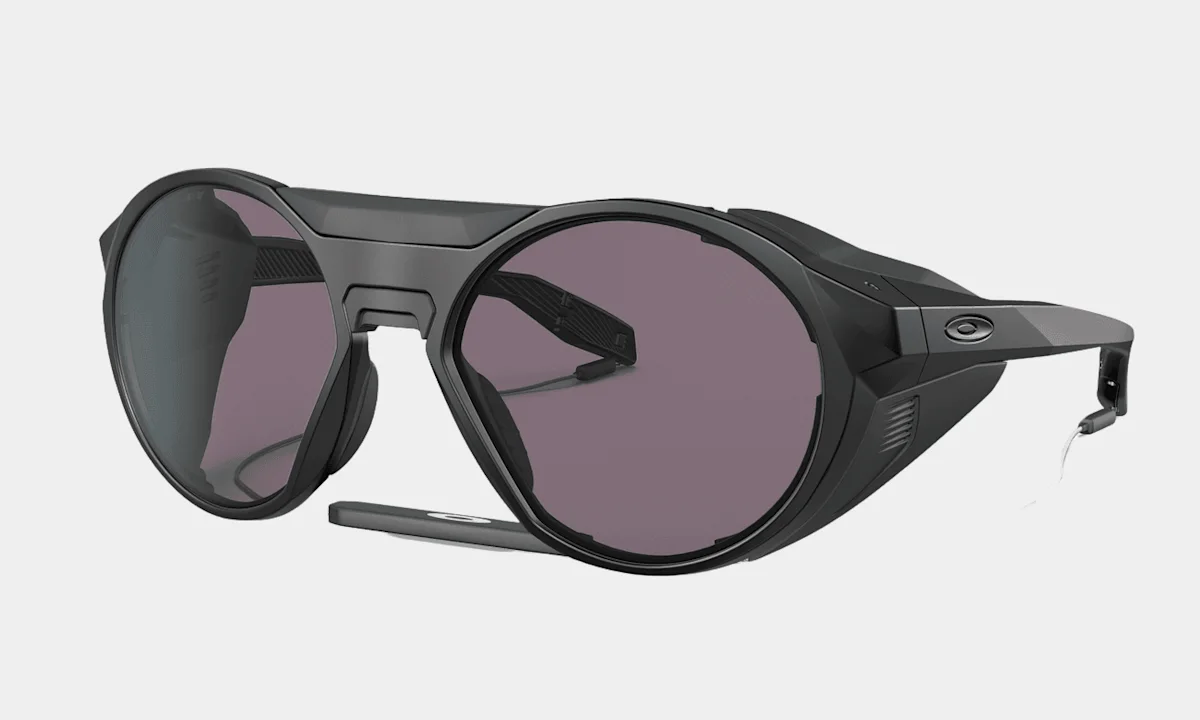
Oakley Clifden
Most Technical: Oakley Clifden
Pros: Major retro-futuristic vibes.
Cons: Major retro-futuristic vibes.
Price: $281
The Oakley Clifdens are head turners. If Neo from the “Matrix” climbed Everest, he would do it in these. But don’t let the hyper-modern frame fool you: these are purpose built, with a steel leash, removable nose bridge and side shields, and Prizm lenses designed to enhance color contrast. You can order the Clifdens with cat. 4 lenses that have 8% VLT, and there is an RX option as well.
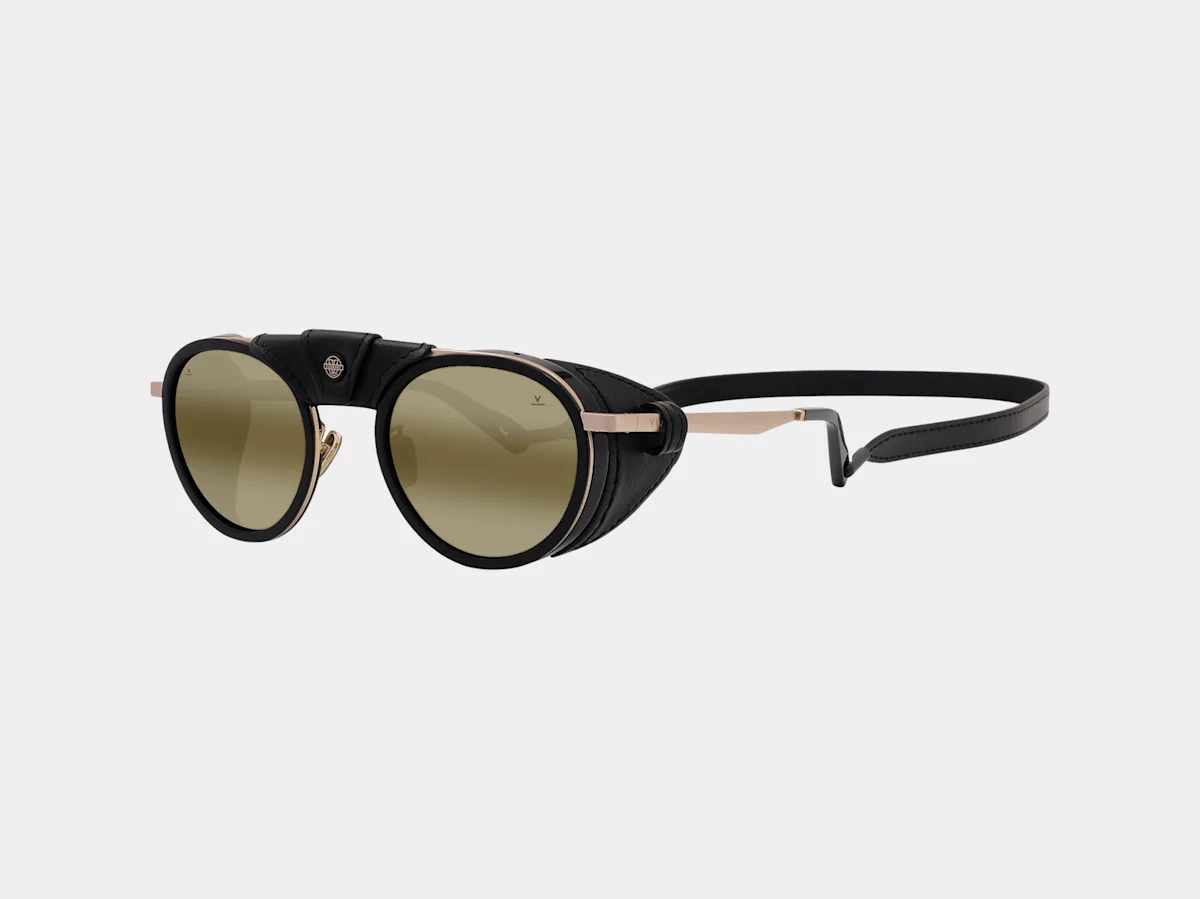
Vuarnet Glacier 02
Best for Low Light Days: Vuarnet Glacier 02
Pros: James Bond approved.
Cons: These are fairly weighty, at 52 grams, and only come with cat. 3 lenses.
Price: $740-800
There is no doubt the Vuarnet Glacier 02 glasses are among the most stylish mountaineering shades you could opt for. Talk about style. The round frame has a jaunty angle and leather accents accentuates the look without overpowering it. They come with a leather strap, removable leather side shields and nose bridge, and mineral lenses. The different options include the Vuarnet Brownlynx lens (for rocky and green environments, Skilynx lens (for snowy environments), and Polarlynx lens (for the sea). However they are the most expensive glacier glasses on this list by a longshot.
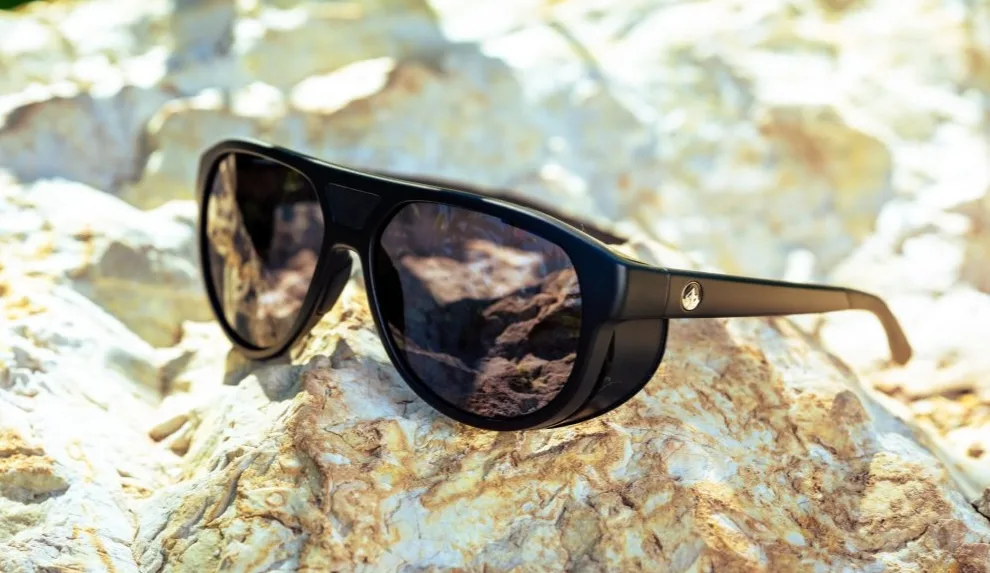
Teton Gravity Research Glacier Sunglasses
Best Goggle Alternative: Teton Gravity Research Glacier Sunglasses
Pros: When maximum coverage is required the TGR Glaciers are ready to answer the call. These are a small step down from goggles.
Cons: No straps or adjustable temples means securing these during high-impact activities could be a challenge.
Price: $150-$175
The Teton Gravity Research Glacier Sunglasses are big and bold options from a brand that knows big and bold. They have an aviator silhouette and seamlessly integrated removable side shields and a removable center piece, making these a daily driver that can perform in the mountains too. They have a mirrored Zeiss polarized lens that eliminates glare entirely.
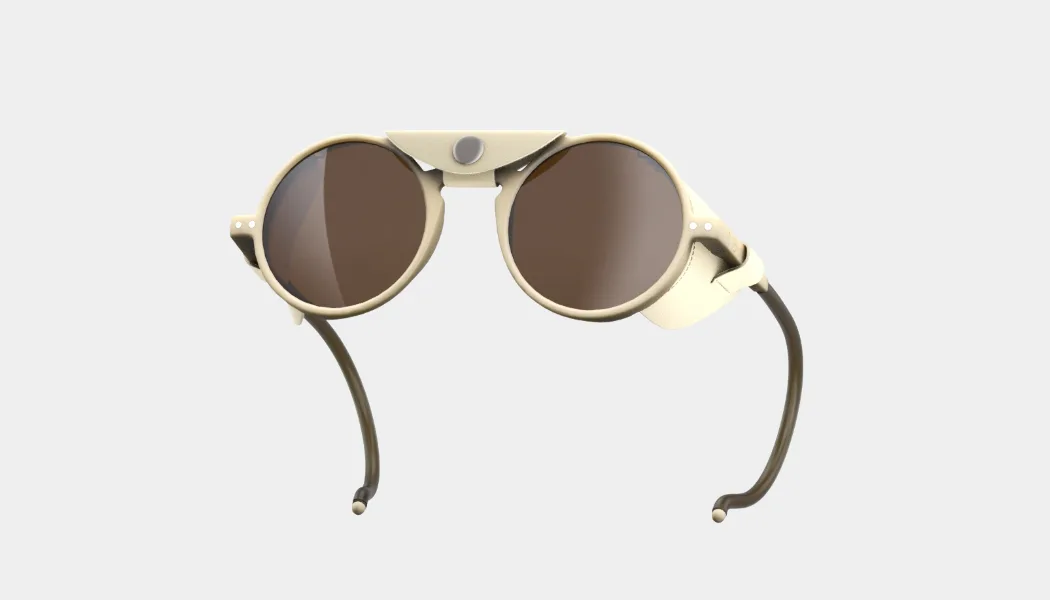
Izipizi Glacier Sunglasses
Best Budget Option: Izipizi Glacier Sunglasses
Pros: 45% castor oil frames get high sustainability marks at a low price point.
Cons: An unproven track record in extreme environments.
Price: $80
The Izipizi Glacier Sunglasses offer many of the same features and classic looks of mountaineering sunglasses that can be 2-3 times the price, with some fun color options and bio-based frames to boot. Perhaps the Parisian brand isn’t a household name in the outdoors world yet, launching a sport category in 2017, but don’t tell that to their Glaciers. These come with cat. 3 or cat. 4 lenses that have a 6% VLT, meaning they will be suitable for intensely bright conditions. They also have removable side shields, and the hooked temples can wrap around the ears so they won’t fall off during jarring ascents or descents. They also come in a pale pink lens—talk about adventure!
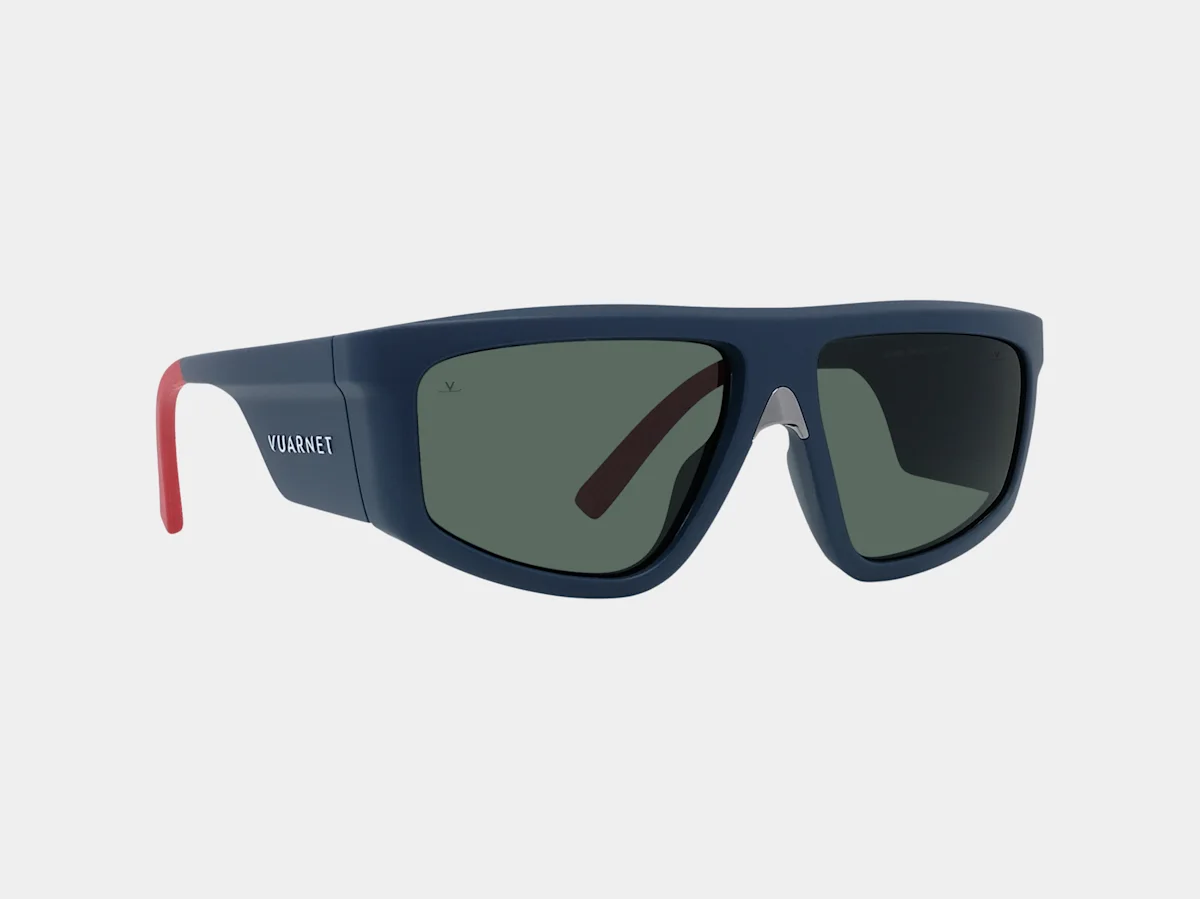
Vuarnet Altitude 03
Best Vintage Vibe: Vuarnet Altitude 03
Pros: The most design-forward option on the list.
Cons: They only come in cat. 3 lenses and don’t have removable side shields.
Price: $395-$410
If a race car and a pair of glacier glasses had a baby it would be the Vuarnet Altitude 03. They are an eye-catching take on glacier glasses with a distinctly ‘70s vibe, and they put the “full” in full coverage, with a wide rectangular frame and long side shields. Unfortunately, those side shields are built into the temples, so be prepared for limited peripheral vision.
The new Arctic 02s ($775) are a more modern alternative from Vuarnet, for those willing to spend a pretty penny on cutting edge design.
Glacier Glasses vs. Solar Shield Sunglasses
Although solar radiation is more intense on top of a mountain, it can impact eyesight at any altitude. Solar shield sunglasses are designed to provide basic sun protection in all conditions thanks to their expansive coverage and strong tints. However, they typically allow for more VLT than would be comfortable on a snowy mountain and, for safety reasons, usually lack side shields that would block peripheral vision That makes solar shield sunglasses great for commuting to work, but much less ideal for summiting Mt. Everest..
Care and Maintenance of Glacier Glasses
Taking care of your glacier glasses will help them take care of you. Like any piece of glass gear, scratches or cracks can seriously degrade the quality of your vision. Worse, a broken frame can turn functional glasses into paperweights. Considering the dynamic environments glacier glasses must withstand, it’s wise to protect the protection.
First and foremost, when not using glacier glasses, store them in their case. This will minimize the potential for damaging dings and keep them clean and clear.
Cleaning the glasses should involve using a microfiber towel (usually provided). If necessary, you can buff them out with a little bit of dish soap.
Looking for a bright spot to use your new glacier glasses? Read our guide to summiting Mt. Elbert, Colorado's highest peak, in the winter.















